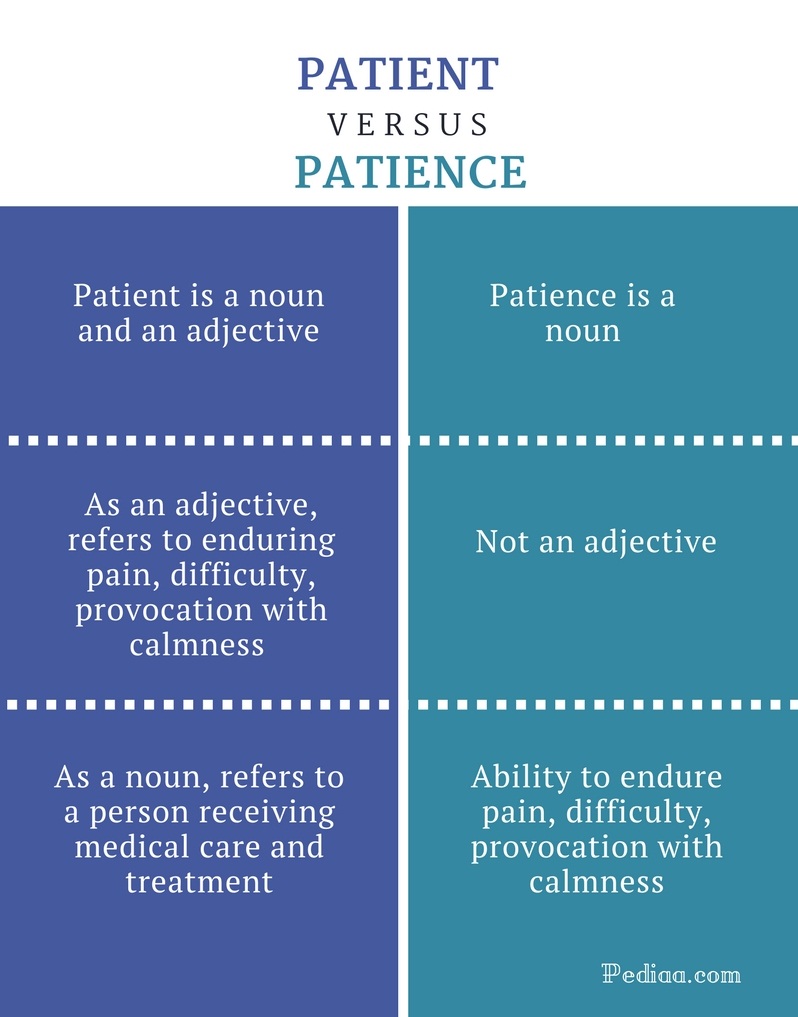The healthcare environment is a complex web of relationships, interactions, and experiences that shape the journey of every individual seeking medical care. Among these relationships, the concept of "patient vs patient" emerges as a significant dynamic that warrants exploration. This phenomenon encapsulates various aspects of healthcare, from the competitive nature of patients vying for resources to the collaborative spirit that can arise among those sharing similar health challenges. As we delve into the world of patient interactions, we uncover the nuances of how patients influence one another, the emotional and psychological factors at play, and the implications for overall health outcomes.
In an era where patient empowerment and shared decision-making are becoming increasingly prevalent, understanding the "patient vs patient" dynamic is crucial. Patients are no longer passive recipients of care; they are active participants in their health journeys. This shift presents opportunities for collaboration and support, but it also introduces challenges related to competition and comparison. The balance between these two aspects can significantly affect the patient experience and the efficacy of care provided.
As we navigate through the intricacies of patient interactions, it becomes essential to examine the implications of "patient vs patient" on mental health, treatment adherence, and overall satisfaction with the healthcare system. This article will explore various dimensions of patient interactions, shedding light on the benefits and drawbacks of this dynamic while providing insights for healthcare providers and patients alike.
What is the Definition of Patient vs Patient?
The term "patient vs patient" refers to the interactions and relationships that develop among individuals receiving medical care. These interactions can manifest in various forms, including competition for resources, emotional support, and sharing of experiences. Understanding this dynamic is essential for both patients and healthcare providers, as it can significantly influence treatment outcomes and the overall healthcare experience.
How Do Patients Influence Each Other?
Patients can have a profound impact on one another, whether through shared experiences, discussions in support groups, or informal conversations in waiting rooms. Here are some ways patients influence each other:
- Emotional Support: Sharing experiences and feelings can provide comfort and reassurance.
- Information Sharing: Patients often exchange valuable information about treatments, side effects, and coping strategies.
- Motivation: Witnessing another patient’s determination can inspire individuals to stay committed to their treatment plans.
What Are the Competitive Aspects of Patient Interactions?
While collaboration is a vital aspect of patient interactions, competition can also play a role. Patients may find themselves comparing their conditions, treatments, and outcomes with one another. This competitive dynamic can lead to:
- Increased Anxiety: Constantly measuring one's progress against others can increase stress and anxiety levels.
- Undermining Support: Competitive feelings can detract from the supportive environment that patients need.
- Disparities in Care: Competition may lead to unequal access to resources or treatment options.
How Can Healthcare Providers Address Patient vs Patient Dynamics?
Healthcare providers play a crucial role in managing the "patient vs patient" dynamic. Here are some strategies they can employ:
- Facilitate Support Groups: Encourage patients to share their experiences in a structured and supportive environment.
- Promote Open Communication: Foster an atmosphere where patients feel comfortable discussing their feelings and concerns.
- Provide Education: Educate patients on the importance of collaboration and support, rather than competition.
What Role Does Technology Play in Patient Interactions?
In today's digital age, technology has transformed how patients interact with one another. Online forums, social media, and telehealth platforms provide new avenues for connection and information sharing. However, these platforms can also exacerbate competitive feelings. Here are some key points to consider:
- Accessibility of Information: Patients have access to a wealth of information online, which can lead to comparisons and competition.
- Virtual Support Groups: Online communities can provide valuable support and resources for patients.
- Potential Misleading Information: The risk of encountering inaccurate information can lead to confusion and anxiety.
How Can Patients Navigate the Patient vs Patient Landscape?
Patients can take proactive steps to navigate the complexities of patient interactions. Here are some practical tips:
- Focus on Personal Goals: Concentrate on individual health goals rather than comparing oneself to others.
- Seek Support: Connect with supportive individuals who foster a positive and encouraging environment.
- Practice Self-Compassion: Remind oneself that every health journey is unique and worthy of respect and understanding.
Conclusion: Embracing the Patient vs Patient Experience
The "patient vs patient" dynamic is a multifaceted aspect of the healthcare experience that can significantly influence treatment outcomes and overall satisfaction. By understanding the various dimensions of this interaction, both patients and healthcare providers can work together to foster a more supportive and collaborative environment. Embracing the strengths of patient interactions while addressing the challenges can lead to improved health outcomes and a more positive healthcare journey for all.
You Might Also Like
Minecraft Auto Farm: Revolutionizing Your Farming ExperienceDelicious Breakfast Rice Dishes To Start Your Day Right
Unlocking Precision: A Deep Dive Into The Dremel Drill Press
Unlocking The Power Of Reverse Pull Down: A Comprehensive Guide
Understanding The Dosage Of MDMA: A Comprehensive Guide
Article Recommendations
- Kyle Singler Wife
- Kim Erome
- Diddy And Kim Kardashian Sex Videos
- Swamp People
- Rod Argent
- Ground Cloudio
- Simon Cowel
- Candice Bergen Health
- Alexis Stewart Net Worth
- Nicole Weir


